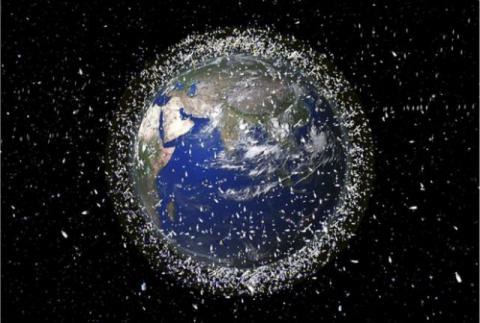Satellite Net Developed in the UK Collects Space Junk for the First Time

Debris orbiting the Earth at more than 17,000 mph has been snared by a prototype "junk hunting" satellite for the first time.
The experimental RemoveDebris satellite first released the metal object and then fired a five metre wide net to capture it from a distance of six metres.
The weight of the net will drag the toaster-sized object into the atmosphere over the next few months, where it will burn up.
The success of the test paves the way for routine missions to clean-up the thousands of redundant satellites currently in orbit.
RemoveDebris was designed and built by a consortium led by Surrey Space Centre at the University of Surrey.
Professor Guglielmo Aglietti, director of the centre, told Sky News that he was "delighted" they had overcome the technical challenges involved.
"The difficulty that we have is that you want to capture your piece of debris with the net, you want to envelop the piece of debris, then at the same time you want to draw a string so you actually capture the thing so it can't escape," he said.
"To synchronise all this, as you can imagine, is a bit challenging."
There are thought to be half a million objects larger than a tennis ball orbiting the planet at speeds high enough to destroy satellites and even the space station.
Only the largest pieces, mainly defunct satellites and rocket parts, can be tracked by radar.
But even objects as small as a bolt can punch a hole in the honeycomb walls of satellites and their fragile wings of solar panels.
The nightmare scenario is a collision between two satellites in ever more crowded low Earth orbit. The resulting cloud of fragments could start a chain reaction of further collisions, wiping out large numbers of satellites.
Ingo...
- Log in to post comments
